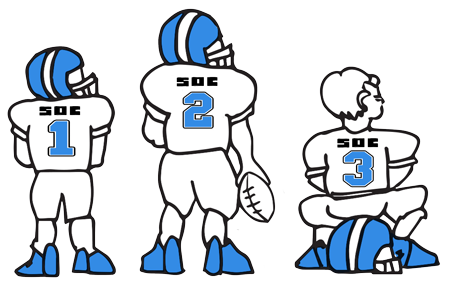ICFiles
SOC 2

Secure File Transfer Soc 2 starts at $1 per month
How Gamification Plays With Employees
Tip of the Month
January 2016
Get this Article Get this Article & Suite of Tools
How Gamification Plays With Employees
 The International Foundation of Employee Benefit Plans conducted a study that revealed when health and wellness programs are executed as part of a comprehensive healthcare strategy, the cost can generate a return on investment of $3 for every $1 spent.
The International Foundation of Employee Benefit Plans conducted a study that revealed when health and wellness programs are executed as part of a comprehensive healthcare strategy, the cost can generate a return on investment of $3 for every $1 spent.
When it comes to wellness, factors such as stress, inertia and overindulgence can play a huge part in why we don’t do things we know are good for us. However, some workers might feel it’s intrusive for an employer to try to influence good health. Their response may be to experience even more stress, inertia and overindulgence – because now they’re expected to engage in healthier behaviors in addition to their work performance. This is why many companies have implemented a relatively new trend in wellness programs: gamification. Instead of setting up heavy-handed expectations and financial disincentives, they create a game out of adopting healthy behaviors.
Wellness gaming strategies have proven to be effective at engaging workers and motivating them to make changes in their behavior. This tactic generally involves three components: rules, rewards and social interaction/collaboration. For example, one company embarked on a companywide 10,000 steps walking program. Some employers pursued their goal as individuals, while others formed teams. Soon, employees were seen walking outside their workplace before and after work and during lunch hours. Individual and team goals were tracked and rewarded.
Some companies have introduced games that incorporate an immersion experience, where players are encouraged to role play by creating a game name and simulated personality. Some even develop their own game-generated catch-phrases to help stay motivated and share their enthusiasm for the game with others.
If you’re familiar with video gaming, the concept of gamer tags and role playing are very similar. For example, a department head may call himself Head Honcho and his assistant, The Gatekeeper.
Departments may stoke the fires of competition to see who or what team reaches their fitness goals first. Rather than a daily chore or item that must be checked off a worker’s to-do list, exercise becomes a shared and fun experience for employees.
Gamification typically incorporates social networking tools so that participants can track each other’s progress and interact from both work and home computers, tablets and smartphones. This helps many workers stay engaged in healthy activities even away from the office, so they don’t slack off over the weekend or when on vacation.
While early research has revealed positive results, the strategy is not without drawbacks. These drawbacks might include:
- Impact on work productivity
- Perceived infringement on personal time
- Conflicts that can arise between competitive vs. recreational participants
- Whether short-term rewards and incentives are effective at maintaining healthy behaviors over the long term
While fun and games may produce results in the short run, ultimately it’s up to each of us to make changes to our lifestyle. After all, without intrinsic motivation, people tend to return to their regular (often unhealthy) behaviors when the games get old.
Regardless, one study revealed that more than three-fourths of employees say rewards provide the incentive to participate in an employer wellness program. Consider that workers who already live healthy lifestyles will do so whether you introduce a game or not. It’s the ones that don’t that you need to motivate, and gaming often provides the right type of incentive.
The following are some guidelines to consider when developing a wellness gamification strategy:
- Keep it simple, easy and achievable
- Points, levels and rewards help drive engagement, ongoing employee participation and healthier behaviors
- Periodically deploy new challenges to re-energize enthusiasm
- Make it easy to track and monitor progress
- Make it social – provide ways for employees to connect socially to share scores, talk about leader-boards, exchange tips/tricks and brag about their success
- Get C-level buy in and participation, if possible
- Capture data to gauge the game’s efficacy and use it to adjust the game to achieve ongoing results
Get this Article Get this Article & Suite of Tools
These articles are intended to provide general resources for the tax and accounting needs of small businesses and individuals. Service2Client LLC is the author, but is not engaged in rendering specific legal, accounting, financial or professional advice. Service2Client LLC makes no representation that the recommendations of Service2Client LLC will achieve any result. The NSAD has not reviewed any of the Service2Client LLC content. Readers are encouraged to contact their CPA regarding the topics in these articles.
Dynamic Content Powered by Service2client.com
SEO Content Powered by DynamicPost.net






